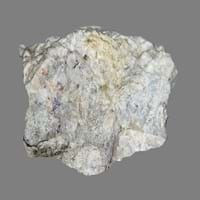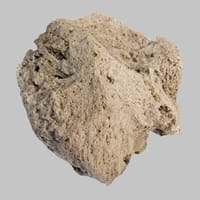Definition
Skarns are formed during regional or contact metamorphism and from a variety of metasomatic processes involving fluids of magmatic, metamorphic, and/or marine origin
Pumice is a volcanic rock that consists of highly vesicular rough textured volcanic glass, which may or may not contain crystals
Origin
USA, Australia
Spain
Discoverer
Tornebohm
Unknown
Etymology
From an old Swedish mining term originally used to describe a type of silicate gangue or waste rock.
From Old French pomis, from a Latin dialect variant of pumex
Class
Metamorphic Rocks
Igneous Rocks
Sub-Class
Durable Rock, Hard Rock
Durable Rock, Medium Hardness Rock
Group
Not Applicable
Volcanic
Other Categories
Fine Grained Rock, Opaque Rock
Fine Grained Rock, Opaque Rock
Texture
Earthy, Mud-rich, Rough
Vesicular
Color
Black, Brown, Colourless, Green, Grey, White
Beige, Colourless, Grey, Light Green, Light Grey, Pink, White, Yellow- grey
Durability
Durable
Durable
Scratch Resistant
Yes
Yes
Appearance
Dull
Vesicular
Interior Uses
Decorative Aggregates, Entryways, Interior Decoration
Decorative Aggregates, Flooring, Homes, Interior Decoration
Exterior Uses
As Building Stone, As Facing Stone, Garden Decoration, Paving Stone
As Building Stone, As Facing Stone, Garden Decoration, Paving Stone
Other Architectural Uses
Curbing
Curbing, Powder
Construction Industry
As a Flux in the Production of Steel and Pig Iron, As a Sintering Agent in Steel Industry to process Iron Ore, As Dimension Stone, Gold and Silver production, Manufacture of Magnesium and Dolomite Refractories
As Dimension Stone, Cement Manufacture, for Road Aggregate, In landscaping and horticulture, Making natural cement, Production of lightweight concrete blocks
Medical Industry
Not Applicable
As an abrasive in skin exfoliating products, In Chemical and Pharmaceutical Industry, Medicines and Cosmetics
Antiquity Uses
Artifacts, Monuments, Sculpture
Artifacts
Commercial Uses
Creating Artwork, Gemstone, Jewelry, Metallurgical Flux, Source of Magnesia (MgO)
As a traction material on snow-covered roads, As an abrasive in pencil erasers, Fine abrasive used for polishing, Manufacture of Soap, Solvents, Dyes, Plastics and Fibres, Used in aquariums
Features
Host Rock for Lead, Zinc and Copper Deposits
Host Rock for Lead
Archaeological Significance
Monuments
Used
Not Yet Used
Famous Monuments
Data Not Available
Not Applicable
Sculpture
Used
Not Yet Used
Famous Sculptures
Data Not Available
Not Applicable
Pictographs
Not Used
Used
Petroglyphs
Not Used
Used
Figurines
Used
Not Yet Used
Formation
Due to change in environmental conditions, rocks are heated and pressurized deep inside the Earth's surface. Skarn is formed from the extreme heat caused by magma or by the intense collisions and friction of tectonic plates.
Pumice rock forms when the magma cools so quickly that atoms in the melt are not able to arrange themselves into a crystalline structure.
Mineral Content
Calcite, Enstatite, Epidote, Garnet, Magnetite, Pyroxene, Titanite
Aluminum Oxides, Calcite, Carbonate, Iron Oxides, Silica
Compound Content
Au, CaO, Carbon Dioxide, Cu, Fe, MgO
Al, Aluminium Oxide, CaO, Carbon Dioxide, MgO, Silicon Dioxide
Types of Metamorphism
Burial Metamorphism, Cataclastic Metamorphism, Contact Metamorphism, Hydrothermal Metamorphism, Impact Metamorphism, Regional Metamorphism
Burial Metamorphism, Impact Metamorphism
Types of Weathering
Not Applicable
Biological Weathering, Chemical Weathering, Mechanical Weathering
Types of Erosion
Not Applicable
Chemical Erosion, Coastal Erosion, Glacier Erosion, Sea Erosion, Water Erosion, Wind Erosion
Grain Size
Fine Grained
Fine Grained
Fracture
Irregular
Planar
Streak
Light to dark brown
White, Greenish White or Grey
Porosity
Less Porous
Highly Porous
Luster
Waxy and Dull
Earthy
Compressive Strength
Not Available
Specific Gravity
2.86
2.86
Transparency
Opaque
Opaque
Density
2.8-2.9 g/cm3
0.25-0.3 g/cm3
Resistance
Heat Resistant
Impact Resistant, Pressure Resistant
Deposits in Eastern Continents
Asia
China, India, Russia, Saudi Arabia, South Korea, Sri Lanka
Afghanistan, Indonesia, Japan, Russia
Africa
South Africa, Western Africa
Ethiopia, Kenya, Tanzania
Europe
United Kingdom
Greece, Hungary, Iceland, Italy, Turkey
Others
Not Yet Found
Not Yet Found
Deposits in Western Continents
North America
Canada
Bahamas, Barbados, Canada, Costa Rica, Cuba, Jamaica, Mexico, USA
South America
Brazil, Colombia, Paraguay
Argentina, Chile, Ecuador, Peru
Deposits in Oceania Continent
Australia
Central Australia, Western Australia
New Zealand, Western Australia
All about Skarn and Pumice Properties
Know all about Skarn and Pumice properties here. All properties of rocks are important as they define the type of rock and its application. Skarn belongs to Metamorphic Rocks while Pumice belongs to Igneous Rocks.Texture of Skarn is Earthy, Mud-rich, Rough whereas that of Pumice is Vesicular. Skarn appears Dull and Pumice appears Vesicular. The luster of Skarn is waxy and dull while that of Pumice is earthy. Skarn is available in black, brown, colourless, green, grey, white colors whereas Pumice is available in beige, colourless, grey, light green, light grey, pink, white, yellow- grey colors. The commercial uses of Skarn are creating artwork, gemstone, jewelry, metallurgical flux, source of magnesia (mgo) and that of Pumice are as a traction material on snow-covered roads, as an abrasive in pencil erasers, fine abrasive used for polishing, manufacture of soap, solvents, dyes, plastics and fibres, used in aquariums.










